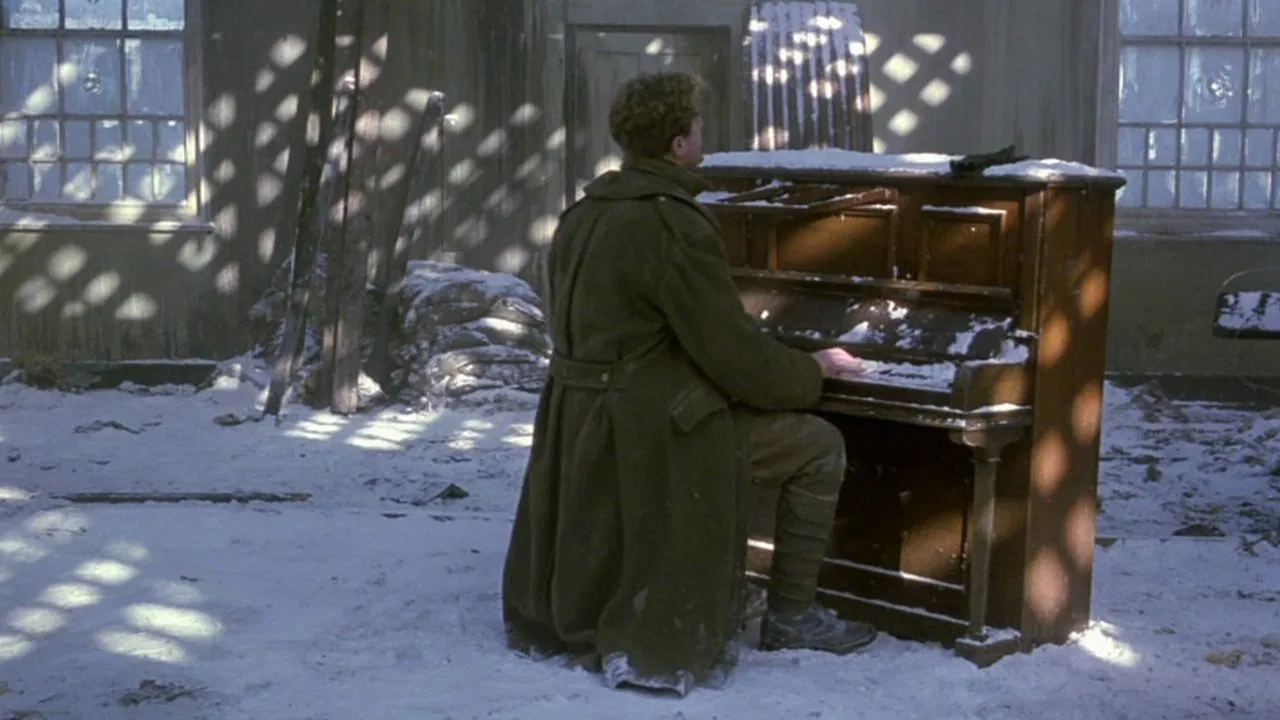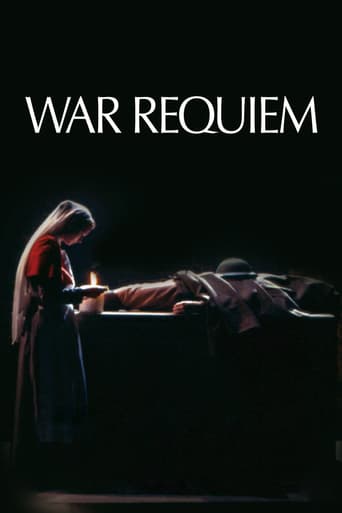

Derek Jarman's "War Requiem" is not a movie in the general sense of the term. The only dialogue is at the beginning. From there it's all images of soldiers, set to the tune of Benjamin Britten's* requiem of the same title. I'd say that the movie works as a look at the horrors of war. The focus is World War I, but it includes footage of later wars. The music offers a good contrast to the war, but at the same time it distracts.This is the first Jarman movie that I've ever seen. It has its merits and its weaknesses. It turned out to be one of Jarman's final movies (he died of an AIDS-related illness in 1994). What the movie should do is force us to take a serious look at WWI. Not only did it senselessly kill millions and create a lost generation, but Versailles Negotiations set the stages for Hitler's rise to power, the Vietnam War, and the current bloodshed in the Middle East.So the movie does a good job showing the horrors of the war, although I doubt that it's possible to portray to the full extent. It's not clear if Jarman meant for the emphasis to be on the war, or on the operatic soundtrack accompanying the scenes. The result is an OK, not great effort.PS: Jarman, an openly gay man, fought Thatcher's proposed anti-gay laws in the '80s. I wonder what he would think now that the UK has marriage equality.*Benjamin Britten's music more recently appeared in Wes Anderson's "Moonrise Kingdom".
... View MoreMusic has been blended with film to incredible effect before: Greenaway's Prospero's Books, Vertov's Man with a Movie Camera and Reggio's Koyaanisqatsi spring to mind and I was naively expecting something of similar quality here. Instead I watched an appalling succession of tasteless, overwrought and prosaic imagery married with hysterical howls emanating from the bony profile of Tilda Swinton. Here the actors only served to detract from the music. The directors of the previous films were virtuosi and I think it requires something of that quality in editing, camera work and imagination: to actually add something to a piece of music rather than just take a ride on its tresses. As a backup plan I decided to concentrate more on the Requiem and found it peppered with sung passages of Wilfred Owen's poetry that do them no justice whatsoever.
... View MoreWar Requiem is a vital film in Derek Jarman's filmography; seemingly handcuffed by a score with which he could not play around at all, Jarman could not work his sonic wizardry with his usual collaborator Simon Fisher Turner, or any others. However, here Jarman fused many of his passions and obsessions into one of his most personal statements: working with favorite actors, especially the intense and beautiful Tilda Swinton; using the shimmering, glorious Super 8 of home and play; collaging and staging and digging up artifacts to reposition and reexamine them; and composing image and cuts like a composer working on a new symphony. Dziga Vertov and Dovzhenko may have been working in this vein this decades ago, but if Jarman gives it a try today, the comparisons are to "music video"; naturally, no one is really paying attention if they're making comments like this. The intent and effect of works such as War Requiem (or The Last of England and The Garden) are virtually an antithesis of the shallow, splashy, and seizure-ridden style and pace of MTV and company. Jarman has advanced his uniquely cinematic aesthetic - somewhere between the work of a symphonic composer and a painter, working with light and celluloid instead of oils - in this work that treads a tightrope between narrative and poetic verse. So many sequences of this film are powerful and gutsy and utterly moving: the montage of war footage, building in rhythm and intensity with Britten's score; the tear-inducing shot of Tilda swaying to the music; the nurses playing "Blind Man¹s Bluff"; the smoke and flowers. Derek crafted one of his most hearfelt, original, and spontaneously lyrical movies in War Requiem; now it only needs a top-notch release on DVD.
... View MoreA misguided attempt at a music video for Benjamin Britten's piece of the same name, "War Requiem" falls flat because of this very concept. To their credit, the filmmakers add or subtract nothing to the performance of the Requiem but rather present a montage of images to be seen along with the performance (which thankfully is top-notch). Unfortunately, the end result is a long almost MTV quality production which makes one realize how unbearably pretentious the phenomenon of the music video can be.War Requiem is a work which invites personal involvement, so I can appreciate the obvious love and need to contribute which the filmmakers have for it, but Britten's music and Wilfred Owen's poetry speak so eloquently for themselves that this pretentious performance art approach merely detracts from them.
... View More